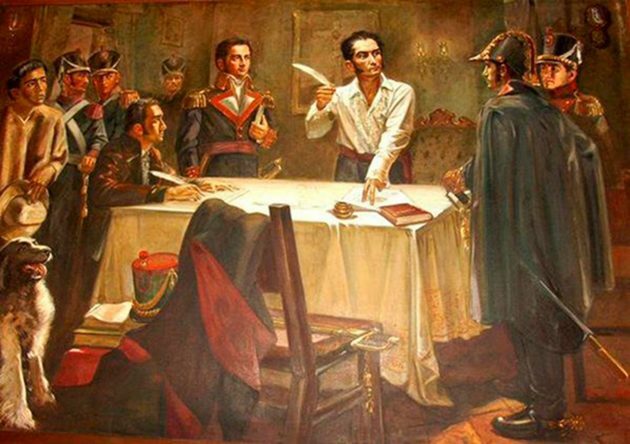question 1
(ENEM 2006) According to the most widespread explanation about the settlement of America, Asian groups would have arrived in this continent through the Bering Strait 18,000 years ago. From this region, located in the extreme northwest of the American continent, these groups and their descendants would have migrated, little by little, to other areas, reaching the southern portion of the continent. However, through archeological studies carried out in the Serra da Capivara National Park (Piauí), traces of human presence that are up to 50,000 years old were discovered.
Validated, the material evidence found by archaeologists in Piauí:
a) prove that groups of African origin crossed the Atlantic Ocean to Piauí 18 thousand years ago.
b) confirm that man first appeared in North America and then populated the other continents.
c) contest the theory that the American man first appeared in South America and then crossed the NarrowinBering.
d) confirm that groups of Asian origin crossed the NarrowinBering 18 thousand years ago.
e) contest the theory that the settlement of America began 18 thousand years ago.
question 2
(Fuvest -SP) In recent years, supported by more advanced techniques, archeology has provided clues and beginnings on the history of the first inhabitants of the Brazilian territory before the arrival of the Europeans. About this period of history, it is possible to state that:
a) agricultural practices, until the arrival of the Europeans, were unknown to all native populations who, according to the traces found, survived only from gathering, hunting and fishing.
b) the oldest traces of human groups were found in the region of Piauí and the dates on their origins are quite controversial, ranging from 12 thousand to 40 thousand years.
c) the remains of graves and paintings found in caves in various regions of the country indicate that the customs and habits of these first inhabitants were identical to those of the current natives in the reservations.
d) the sambaquis, traces dating back 20,000 years, prove the lack of knowledge of ceramics among the indigenous people of the region, a technique developed only among Andean, Mayan and Aztec peoples.
e) the archaeological sites on the island of Marajó are evidence of the existence of important urban cultures with stratified societies that maintained commercial relations with the peoples of the Antilles and America Central.
More questionsIn this class we will see a brief review about probability and how to solve this issue in Enem.
Watch our class and understand how poverty is established in Brazil and in the world. See also the causes of poverty in Brazil and the most relevant data on the subject.



